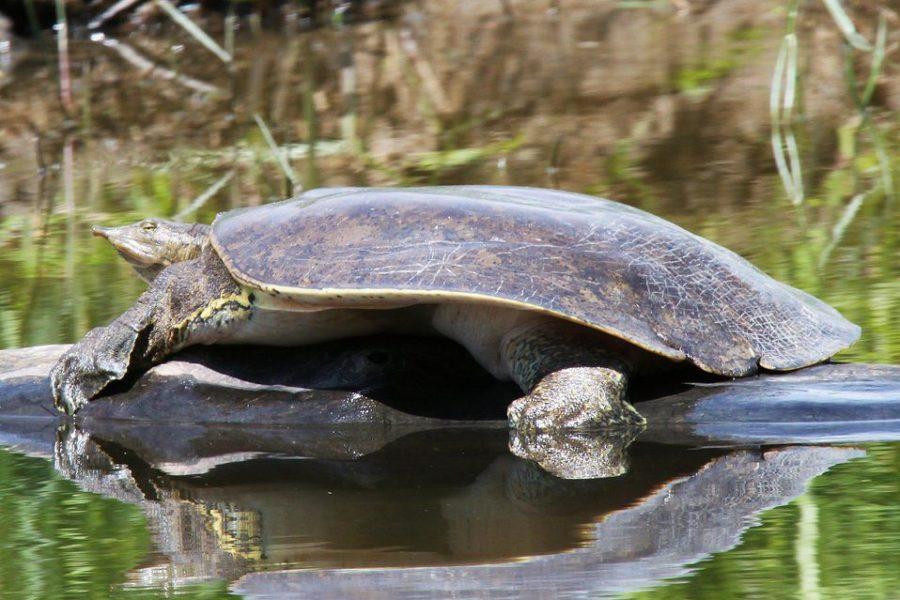Stills: Meet the weird next-door neighbor of the turtle family
Spiny Softshell Turtle (female) photographed at Missisquoi National Wildlife Refuge. Courtesy of Ken Sturm/USFWS
October 16, 2018
When we think of turtles, we all probably picture the same thing. We might think of the cute green or brown hard-shelled little animal that slowly walks across the ground. That is the accurate picture for most turtles in the world, including the ones we have living in Iowa.
But there is also a turtle species that does not quite fit that mold.
With an appearance that has been compared to a pancake, the softshell turtle steers away from the average turtle look because of their flat, soft shell as well as their elongated nose and neck.
Although all those things seem strange they help the turtles thrive in their habitats. The soft and flattened shells allow for increased flexibility for the turtles. This helps with doing things such as burying themselves down in the mud or sand underwater where they sleep.
Their elongated noses comes into play with their sleeping location also. This is because while they are buried, they like to keep their noses out of water so they can still breathe. Elongation of the neck also helps with swimming because they can couple the long neck with their extended nose and be able to keep their body fully submerged while still breathing air. Basically, softshell turtles have developed their own homegrown snorkel.
There are two different species of softshell turtles here in Iowa − the spiny softshell turtle and the smooth softshell turtle. These two are similar in the most basic ways of living, including how much they grow. The females’ shell will grow to about 17 inches while the males’ will only reach half that. After that, you can start to see the differences they possess.
The first one is the easiest way to identify between the two, color. For males, the spiny softshell turtle will be greenish or yellowish while the smooth softshell turtles will be more brown. However, both males will also have small dots and stripes of dark color on their shells.
The females are harder to identify just off of color because for both species they are much blander and darker with bigger blotches of dark color. This leads to another way to identify them, the texture of their shells. I could explain it quickly by saying it is no coincidence how these turtles got their names. The smooth softshell turtle will obviously have a very smooth shell, while the spiny softshell turtle has a shell that feels like sandpaper. Some females may feel more on the smooth side except in the front of their shells, where it is noticeably more rough.
Neither of the species of softshell turtles here in Iowa are endangered. They are actually even legal to take and harvest with a valid fishing license.
That being said, it is still important if you are trying to catch them to be cautious depending on which kind you catch. These two species are very different when it comes to personality, again corresponding to their names. The smooth softshell turtle will remain very passive if picked up while the spiny softshell turtle will scratch and bite you as much as it can.
So if you’re not using that fishing license, it is always best to simply leave them alone and observe them in their habitat, even if they look like a weird turtle pancake.







